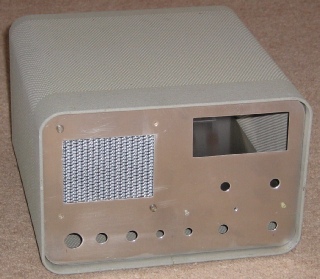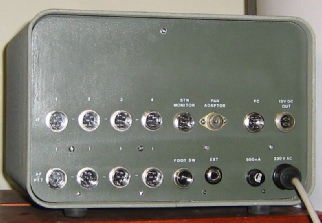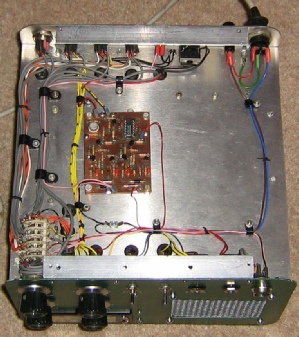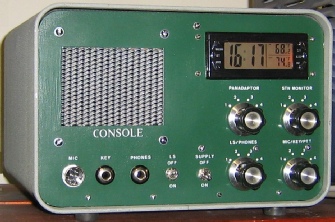Station Console
I have never been able to obtain a Heathkit SB-
The clock was procured direct from a Chinese source and a car hifi loudspeaker with a large magnet was obtained -
The internal structure consists of a flat chassis just above the lower row of controls and attached to the front and rear panels and a supporting rod. The chassis will support the internal wiring, provide screening and support a simple 12V DC power supply.


Front 
 and rear panels prior to painting:
and rear panels prior to painting:
The rear panel still has its protective plastic coating in place which will be removed just before the priming and painting takes place.
The digital clock has a 24 hour display plus two temperature values, one with an internal sensor and one with an external sensor on a two foot extension cable which has been wired to a rear panel connector marked “EXT” to allow a single external temperature monitoring point.
The remaining two photos show the interior arrangement and wiring:
Top Interior: Underside Interior:
Front and rear panels after painting, lettering, mechanical assembly and wiring:


The PCB contains a +/-
The 1.5V AA battery is to run the clock instead of the original internal button cells which should result in a longer operational life. The additional wiring for this required caused mains spikes at switch-
The PCB contains the keying line interface to the station monitor. This interface translates both the negative going and positive going key lines in the various rigs to a single positive going 12v signal to energise the changeover reed relay in the station monitor to allow automatic monitoring of both receive and transmit signals. The negative keying interface will work with -
All rotary switches are break before make to prevent the various control lines in the external rigs from being connected together while changing switch positions.

